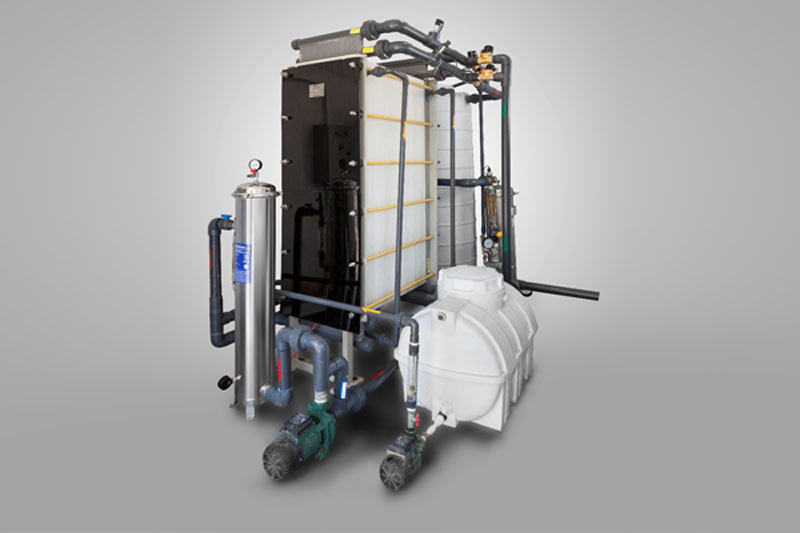
Nitrate Removal Systems
Nitrate is a priority pollutant in drinking water, due to its negative effects on human health. Nitrate is highly soluble in water, and requires specific water treatment methods to remove it. There are several traditional methods for nitrate removal, but they have some limitations and drawbacks. Therefore, new methods are being considered to address the nitrate pollution problem.
One of the most advanced technologies for nitrate removal from drinking water is Selective Electrodialysis. This is a process that uses an electric field and selective membranes to separate nitrate ions from the inlet water stream and transfer them to a concentrated waste stream.
PNF Co. is the only active company in Iran that designs and manufactures EDR systems, which are based on the electrodialysis technology. We offer EDR as an efficient and suitable solution for nitrate removal from drinking water.
Our EDR system has many advantages over other methods, such as:
- No need for chemical additives
- Low operating costs compared to reverse osmosis and ion exchange
- Selective removal of nitrate without increasing other soluble ions
- High removal efficiency of over 70% of the inlet nitrate
- Low energy consumption
Our EDR system is branded as PNAN, and can be applied to different capacities and water sources.
Features:
- High water recovery up to 90%
- No need pretreatment in most cases
- Low energy consumption
- Membrane life time more than 10 years
- Low operational cost

Model | Maximum Capacity (m3/day) | Reject (%) | Power Consumption (kWh/m3) | Dimension D*W*H (cm) | Weight (kg) |
|---|---|---|---|---|---|
PNAN-50s | 5 | 3-1 | 1 | 196*100*200 | 400 |
PNAN-75s | 5 | 3-1 | 1 | 196*100*200 | 400 |
PNAN-100s | 20 | 3-1 | 1 | 196*100*200 | 450 |
PNAN-100b | 100 | 3-1 | 0.4> | 196*161*362 | 800 |
PNAN-250b | 250 | 3-1 | 0.4> | 235*221*371 | 1200 |

Water Desalination Systems
Water scarcity and increasing water demand require alternative water sources. Desalination of saline and brackish water is a key solution to meet the water needs. Desalination can use different water sources, such as well water, surface water, and groundwater.
Desalination has become more efficient and cost-competitive globally, thanks to recent technological advances. Desalination systems can be categorized by their energy sources, such as thermal, mechanical, electrical and chemical. The main factors for choosing a desalination system are energy consumption, waste production and lifetime of the system.
Desalination is a common solution for regions with limited fresh water resources. There are various methods for desalinating brackish and sea water. PNF offers EDR technology as a suitable and effective method for desalination.
EDR is an electrochemical method that removes ionic contaminants from water by using anionic and cationic membranes and an electric field to separate salt from water. This method is a chemical free solution with a relatively low pressure and low energy consumption which recovers higher input water up to 90 percent.
Features
- Desalination with an efficiency almost 80%-95%
- Lower power consumption compared to the other methods
- Membrane life time more than 5 years
- Low operational cost
- Ability to remove nitrates selectively processes and wastewater management
- Improving RO efficiency by implementing EDR on RO reject
Model | Maximum Capacity (hm3/) | Reject (%) | Maximum inlet EC (ms/cm) | Outlet EC (ms/cm) | Power Consumption (kWh/m3) | Dimension D*W*H (cm) | Weight (kg) | PNAD-60s | 20 | 5-15 | 5000 | 500-1000 | 0.8 | 60*60*70 | 200 |
|---|---|---|---|---|---|---|---|
PNAD-100 | 100 | 5-15 | 6000 | 500-1000 | 1-1.5 | 1960*615*620 | 1000 |
PNAD-250 | 280 | 5-25 | 10000 | 500-1000 | 1-2 | 2350*2210*4500 | 1500 |
Explanation
- Above models can be used modular to gain more capacities.
- The custom made units can be designed for other EC and capacities.
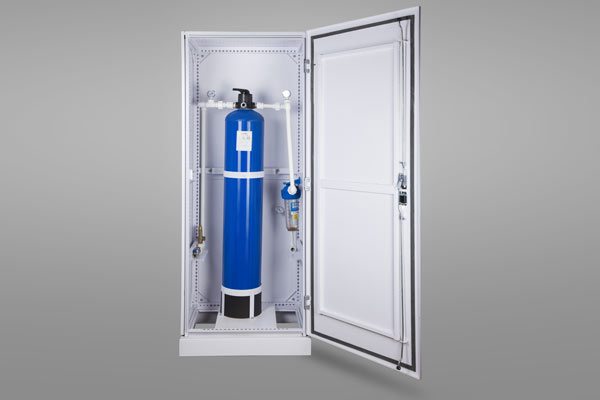
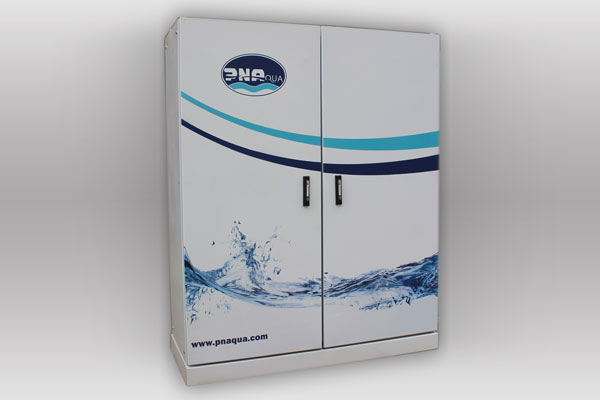
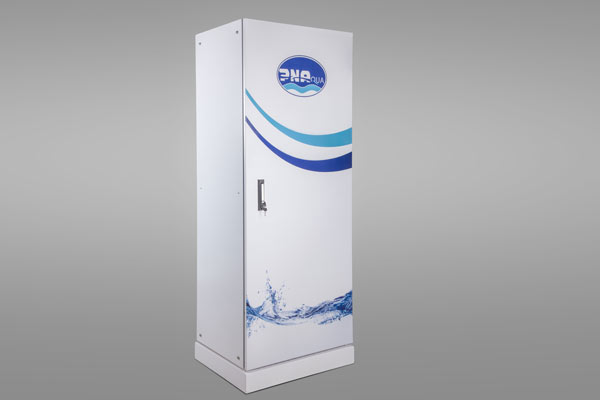
Arsenic Removal Systems
Groundwater resources are increasingly polluted by contaminants, especially heavy metals, which reduce their quality and usability. Arsenic is one of the most harmful pollutants, which can enter groundwater from natural sources or industrial wastewater. Arsenic is a carcinogen, according to the World Health Organization, and its removal from drinking water is a high priority.
In Iran, the depletion of groundwater resources due to drought and overexploitation has led to higher concentrations of arsenic, especially in the Zagros Mountains region. This problem will worsen every year as precipitation decreases and groundwater levels drop.
PNF offers arsenic removal units for drinking and non-drinking industrial water, using special high-efficiency adsorbents that can handle different capacities. These adsorbents have a long lifetime due to their high adsorption capacity. These units do not require any chemicals or electricity, so they have low capital and operational costs. The main maintenance cost is related to the replacement of adsorbents. For high inlet arsenic levels, we use advanced electrocoagulation as a pretreatment to reduce the adsorbent consumption and operational cost.
Features
- Portable
- Easy disposal of used media
- User-friendly
- Low operational cost
- High performance arsenic removal (up to 99%)
- Almost no rejection
- No chemical & energy needed
- No need for pH adjustment
- Long life time of media
Model | Capacity (DAY/m3) | Media Life time (year) | Pressure drop (bar) | Operational pressure (bar) | Dimension D*W*H (cm) | Weight (kg) | Option | PNAN-20 | 20 | >2 | <0.7 | <0.2 | 200*80*60 | 120 | Cart reader
Pressure vessel |
|---|---|---|---|---|---|---|---|
PNAS-50 | 50 | >2 | <0.7 | <0.2 | 200*80*80 | 200 | Cart reader
Pressure vessel |
PNAS-100 | 100 | >2 | <0.7 | <0.2 | 200*80*120 | 250 | Cart reader
Pressure vessel |
– | >500 | Custom Design | Custom Design | Custom Design | Custom Design | Custom Design | Cart reader
Pressure vessel |
PNF provides arsenic-contaminated water treatment systems in different capacities by obtaining the technical knowledge to manufacture Nano-iron adsorbents. So far, more than 100 arsenic removal units in various rural and urban areas have been installed in provinces such as Kerman, Ardabil, West Azerbaijan, Qazvin, etc.
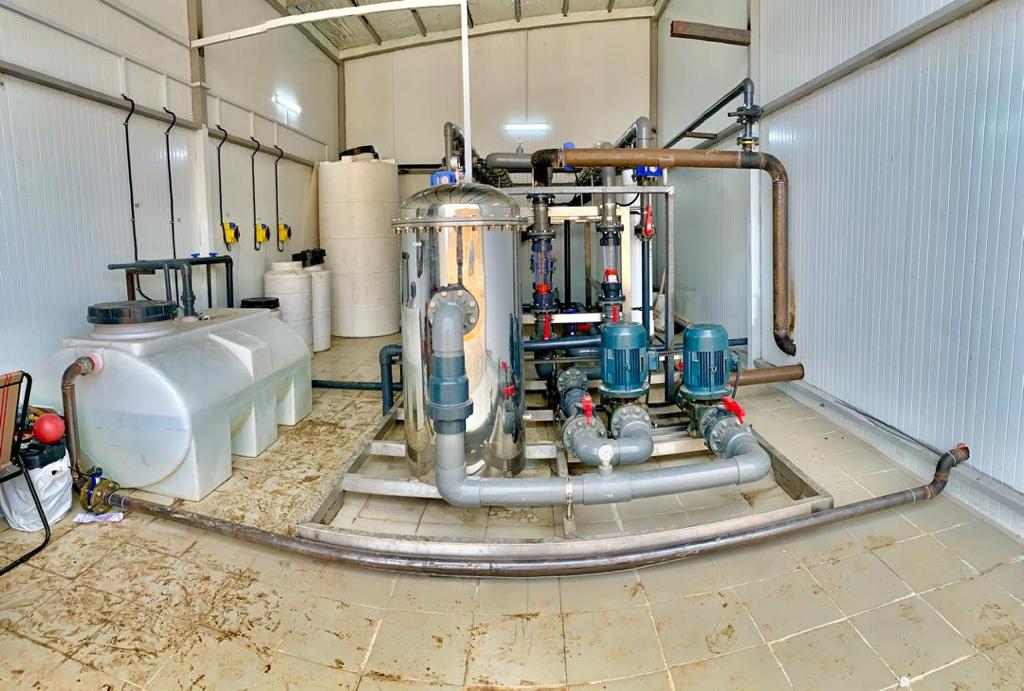
Turbidity Removal Systems
Turbidity is a key parameter for measuring the quality of drinking or industrial water in any treatment unit. Turbidity can be caused by microbial agents or colloidal materials such as rocks, clay and metal oxides that are eroded from the soil.
Conventional methods for turbidity removal rely on coagulation and chemical flocculation of suspended pollutants. These methods are not economical or desirable, as they require large amounts of chemicals.
PNF offers a turbidity removal package that uses the latest technologies which uses UF membrane and an advanced aeration technology systems to remove turbidity from water and wastewater with minimal chemical consumption.
Our turbidity removal solution can handle different types of turbidity and water sources and it is more cost-effective and environmentally friendly than traditional methods.
Features
- Low operational cost
- Continuous operation
- Low space occupation
- Minimum chemical consumption

Effluent recovery from reverse osmosis unit
Hybrid EDR-Ro system
Reverse Osmosis, or RO, is a process
that demineralizes water by forcing it through a semi-permeable membrane under pressure. RO is widely used for desalinating water. However, RO has some environmental and economical drawbacks, such as high salinity disposal and low recovery efficiency.
PNF offers a hybrid system that combines RO and EDR (Electro Dialysis Reversal) technologies. EDR systems are used to recover the effluents of RO units and return them to the input of the RO unit. The main benefit of the RO-EDR system is that it increases performance of the desalination plant up to 90 percent.
Advantages
- Lower chemicals for Ro unit
- Higher performance of desalination
- lower operating costs
- lower rejection of the desalination system
